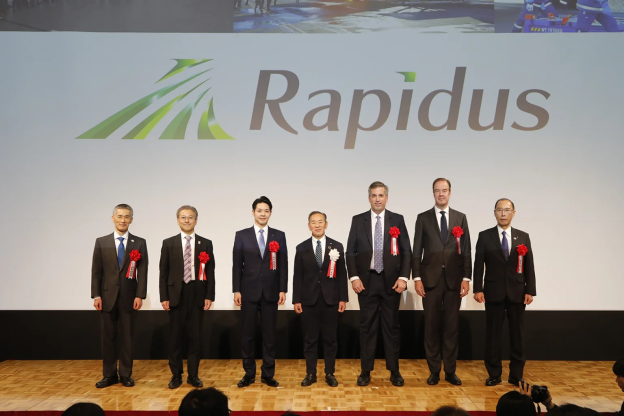
Although demand in the consumer electronics market has not yet recovered, the rise of artificial intelligence and flagship smartphones are driving sustained growth in advanced semiconductor manufacturing. The semiconductor foundry industry remains dynamic, with global research firm TrendForce predicting that foundry production value will increase by 20% annually by 2025, up from 16% in 2024.
Competition in the foundry industry is increasing due to contrasting changes in end market demands. Taiwan remains one of the world’s leading hubs, accounting for more than 70% of global foundry production, with TSMC playing a key role. Meanwhile, Japan, South Korea, the United States, and mainland China are actively developing their foundry industries. Although the current market share is relatively low, policy support and strategic investments by leading companies have unlocked significant potential.
Recently, Japan and South Korea have made new moves to strengthen their foundry sectors and increase their competitiveness.
Japan’s semiconductor revitalization plan: Continued investment in Rapidus
Japan is advancing its semiconductor revitalization strategy with new investment in Rapidus. According to Kyodo News, Japan plans to inject 100 billion yen into Rapidus in the second half of 2025. The total investment from existing and new shareholders is expected to reach approximately 100 billion yen, including government funds. The investment will enable Rapidus to acquire extreme ultraviolet (EUV) lithography equipment, which is essential for manufacturing advanced chips.
Rapidus was established in August 2022 and is a joint venture of eight Japanese companies, including Toyota, Denso, Sony Group, Kioxia, NTT, NEC, Softbank, and Bank of Mitsubishi UFJ. Rapidus is focused on the development and production of cutting-edge process chips below 2nm, and has received an initial investment of 7.3 billion yen from partners and 70 billion yen from the Japanese government. Furthermore, the Japanese government plans to allocate more than 10 trillion yen to support the semiconductor and AI industries by fiscal 2030, with Rapidus as the main beneficiary.
Regarding the development of 2nm chips, Rapidus Chairman Tetsuro Higashi recently said that the installation of 2nm chip prototype equipment will be completed by March 2025, the prototype line will start in April, and actual production will begin after that. Announced.
South Korea’s 20 trillion won plan: Is the goal a “Korean-style TSMC”?
As global semiconductor competition intensifies, South Korea is investing 20 trillion won to strengthen its domestic semiconductor industry. The plan also includes a proposal to establish a Korea Semiconductor Manufacturing Company (KSMC), modeled after Taiwan’s TSMC. Experts estimate that investing 20 trillion won in KSMC could generate 300 trillion won in economic output by 2045.
South Korea’s semiconductor industry is facing what industry insiders are calling the “biggest crisis in history.” Challenges such as weak leadership in memory chip technology, slow investment, talent loss and inadequate policy support are hampering growth.
In the foundry sector, there is a heavy dependence on Samsung Electronics for sub-10nm processes, which is a constraint for small semiconductor companies. KSMC is expected to address structural issues by focusing on mature and specialized processes and complementing enterprises with advanced technology.
South Korea is also committed to strengthening its support for small and medium-sized enterprises (SMEs) by directly investing in companies specializing in materials, components, and equipment to strengthen the R&D competitiveness of the entire ecosystem. I’m here.
The government announced systematic support for the semiconductor industry, including policy loans, infrastructure investment, and tax incentives. South Korea plans to provide more than 14 trillion won in policy financing to the semiconductor sector by 2025, including 4.25 trillion won in low-interest loans through the Korea Industrial Bank and a new 120 billion won in semiconductor ecosystem funds. This fund is scheduled to expand to 420 billion won. You can win in the future.
Additionally, large semiconductor industry clusters are being developed in Yongin and Pyeongtaek. To support the sector’s high energy demands, the government has paid for most of the 1.8 trillion won needed for underground power grids for these clusters and reached agreements with companies on power supply capacity.
(Photo courtesy of Rapidus)
Next article
(News) NVIDIA reportedly establishes ASIC division, actively headhunts talent from Taiwanese IC companies

